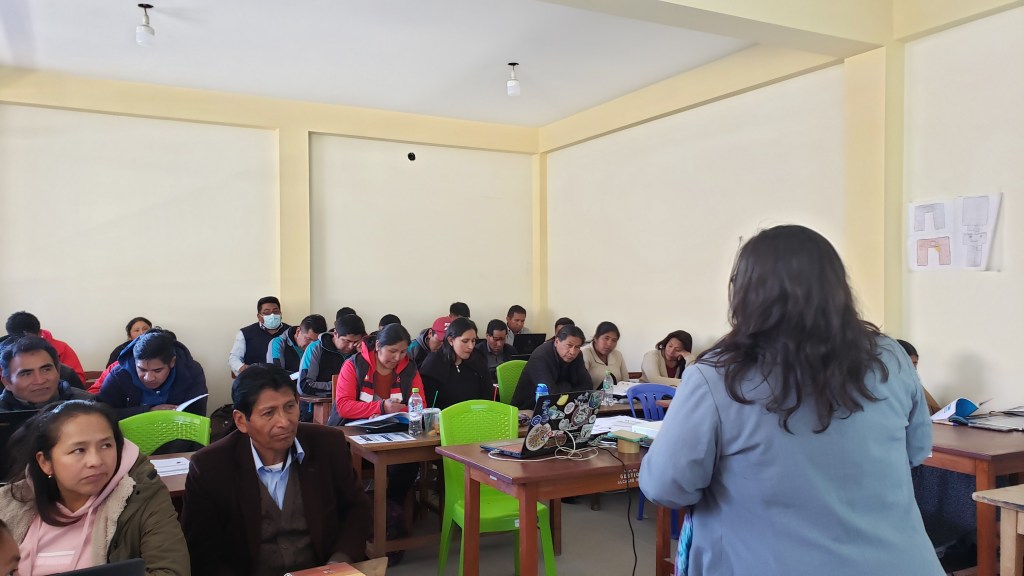
Over the last three years, the user group Wikimedistas de Bolivia has carried out the Reading Wikipedia program for high school teachers, a project that was supported by key partners and stakeholders, with whom they’d worked previously. Among these is Rodny Montoya, a youtuber and content creator who stands out for his educational videos and his particular type of narrative. You may watch some of his work here.
Rodny produces educational documentaries, and some of his work uses Wikipedia as a source. For more than 8 years, his YouTube channel, “Según Yo“, has presented Bolivian history from the perspective of its protagonists to his 91.000 subscribers.
Connectivity in Bolivia and its relation to content creators
Between 2015 and 2022, Internet connectivity in Bolivia greatly improved, although some challenges are still to be met in regards to digital gaps in rural areas. An statistical bulletin issued by the Transports and Telecommunications Authority (ATT, in Spanish) exposed in detail the realities of connectivity throughout the country, including data from the National Telecommunications Company (Entel, in Spanish) that estimates a number of 20.152, out of 24.684, populated areas with access to the Internet nationally, making up a 82% reach.
An article by newspaper Los Tiempos, reported that: “according to a publication by Data Reportal, based on studies by GWI. Statista, GSMA Intelligence, Semrush, Data.ai, PPRO, Ookla, Skai, Locowise, and SimilarWeb, in January 2023 Bolivia had around 8.12 million Internet users. 66% of the population in the country can access the Internet, while the rest can’t”. (Los Tiempos, 05/17/2023).
For this reason, Rodny Montoya’s numbers and scope are very interesting for Wikimedistas de Bolivia, as is the intrinsic value of the contents of his videos, that are not only personally compiled and organized, but are also well-sourced, and presented in a fun and dynamic way, very different from most academic material. The use of memes, colloquialisms, and creativity are the some staples of his content. These are also some reasons why a partnership with Rodny is seen as fundamental at Wikimedistas de Bolivia.
“Rodny’s work is among the first educational content from Bolivia on YouTube. The way he creates knowledge about Bolivia is relevant to us, because he relies on Wikipedia as a baseline, and that’s always reflected in his sources. His videos are very didactical resources” – said Erlan Vega, from the Learning and Education program.
Reading Wikipedia in the Classroom in Bolivia

The pilot of the Reading Wikipedia program was implemented in Bolivia during the pandemic. Like elsewhere in the world, the pandemic deepened the digital gap as much as other gaps (such as the gender gap) in the country, forcing the digitalization of almost all activity, to work and learn from home, something that was not afforded to all homes. However, teachers’ interest and creativity came into play to educate with the help of digital content that could attract the attention of their students. At that time, Rodny’s channel had already been established as a renown and innovative online space for knowledge, reference, and critical thought.
Since last year, Rodny has collaborated directly with Wikimedistas de Bolivia, producing videos explaining what Wikipedia is and how it works, for example. Additionally, he’s helping create some content for Wikipedistas de Bolivia’s own channel. As they learned, some great communicators are supportive of the Wikimedia movement, and their participation is vital to bring new voices and perspectives to their projects.
To watch more featured content by Wikimedistas de Bolivia, subscribe to their YouTube channel!

Can you help us translate this article?
In order for this article to reach as many people as possible we would like your help. Can you translate this article to get the message out?
Start translation